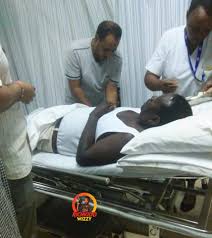Cardiac arrest is one of the most sudden and life-threatening medical emergencies. It occurs when the heart suddenly stops beating, cutting off blood flow to the brain and other vital organs. Without immediate medical help, a person can lose consciousness within seconds and die within minutes.
How Cardiac Arrest Attacks
Unlike a heart attack, which happens due to blocked blood flow to the heart muscle, cardiac arrest results from an electrical malfunction in the heart. This disruption causes irregular heart rhythms known as arrhythmias that stop the heart from pumping effectively.
Common triggers include:
- Coronary artery disease – the leading cause of cardiac arrest.
- Heart attacks – may lead to electrical instability in the heart.
- Heart failure or cardiomyopathy – weakened heart muscles increase risk.
- Severe blood loss or low oxygen levels – can also trigger cardiac arrest.
- Electrocution or trauma – external factors that can stop the heart suddenly.
Warning Signs to Watch For
Cardiac arrest often happens without warning, but sometimes symptoms appear beforehand, such as:
- Chest pain or pressure
- Shortness of breath
- Lightheadedness or fainting
- Heart palpitations
Recognizing these early signs and seeking emergency care can save a life.
How to Prevent Cardiac Arrest
Prevention starts with maintaining a healthy heart:
- Adopt a heart-healthy diet – eat more fruits, vegetables, and whole grains.
- Exercise regularly – at least 30 minutes of activity five times a week.
- Avoid smoking and excessive alcohol – both strain the heart.
- Manage stress and sleep well – mental health affects heart rhythm.
- Schedule regular check-ups – monitor blood pressure, cholesterol, and heart rhythm.
Immediate CPR (cardiopulmonary resuscitation) and the use of an AED (automated external defibrillator) can significantly increase survival chances during cardiac arrest.
Protecting your heart through lifestyle changes and awareness is the best defense against cardiac arrest.

